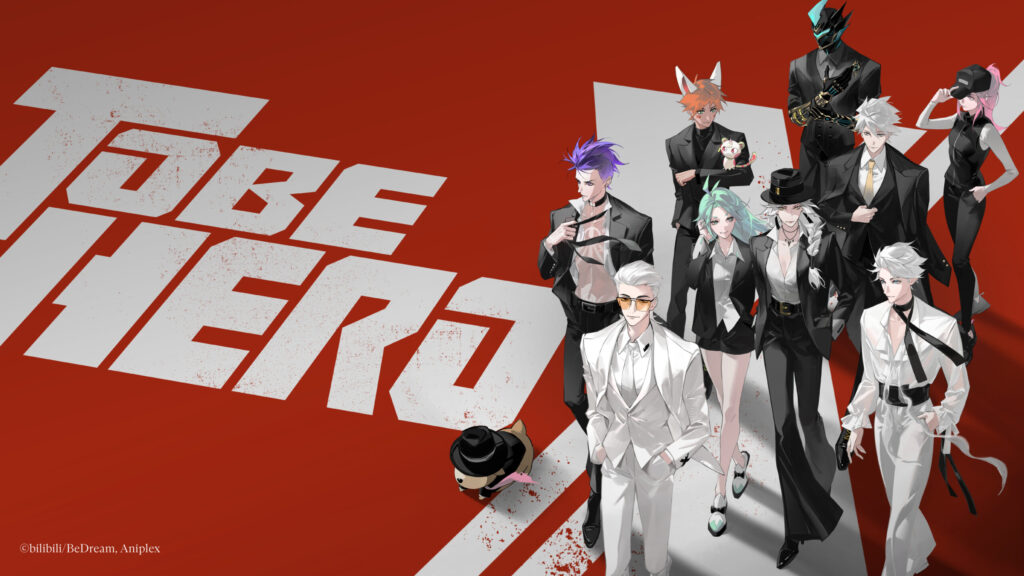
Trust is a powerful thing. Blind trust, even more so. If you truly believe in someone or something, the universe conspires to make it so.
That’s the basis of the world in the new donghua series To Be Hero X or Tu Bian Yingxiong X, the third instalment after To be Hero (Tu Bian Yingxiong Baba) (2016) and To Be Heroine (Tu Bian Yingxiong Leaf) (2018).
Superheroes are the norm there, and it is not unusual for the average citizen to see one cut through the cloud cover in the sky. Unlike the traditional comic book superheroes of Marvel and DC, there are no radioactive spiders or aliens crashing in from Krypton or suits built with advanced tech. Here, the heroes simply derive the power from the faith people have in them.
If the general populace implicitly believes it, then the hero can do it. And ‘it’ can be anything ranging from the ability to fly and wield superhuman strength.
Trust functions like tangible currency in this hero society. The Trust Value is collected and collated from the public and used to calculate the ranking of a hero. Once every two years, a tournament is held in which all the heroes and the hopefuls compete in a fight to determine where they stand in terms of public faith.
But trust is a delicate thing. It can also be easily broken, like a porcelain bowl. If the public no longer has faith in the hero, then the hero’s power crumbles to dust.
While the description of To Be Hero X makes it seem like a light-hearted animated series, the first episode is anything but.
To Be Hero X shows a darker, more realistic side of how exactly a hero cultivates blind faith among the people.
Ad agencies, image consultants and social media managers manipulate public imagination creating heroes out of even the most ordinary and innocuous citizens. Heroes do a lot less saving and a lot more promoting of themselves here.

We follow Lin Lin, a grunt worker for an advertising agency who is part of the team that builds and props up the ideal hero, Nice. Young and impressionable, Lin Lin begins to dream of achieving the lie he sells, that someone as ordinary as him can become a hero too.
Scripted reality TV, commercials for real estate, idol culture—anything goes and the real superhuman threat is the fear of the hero fading from the public imagination.
Even your significant other is carefully chosen for you when you’re a hero, causing you to lose any sense of agency—so much so that if you ever stray from the system, it can and will replace you with a perfect clone, and no one, not even those closest to you, will notice the difference.
You become what people think you are, from the color of your eyes to the sound of your voice. Yet, your original identity is lost and considered dead.
In a way, this scarily parallels the reality of today. It begs the question: how much of what is out there on social media is actually real? Are the successful and the powerful mere industry plants with no substance, just image? Are we all being manipulated into thinking that we are painfully ordinary with no hope of making it anywhere?
To Be Hero X features a blend of highly stylistic 2D visuals and realistic 3DGC models, with dynamic fight scenes that seamlessly use both techniques. It’s also impressive just how expressive the characters are in 3DGC—while they do look like stereotypical anime characters, there is a distinct human element, from the fear and uncertainty in Lin Lin’s eyes to Nice’s fake, plastic smile.
There’s also some interesting cinematography going on as the focus changes from first to third person depending on the situation. It makes for immersive scombat when the character you’re following is thrown on the ground and so are you.
If the first episode is anything to go by, To Be Hero X is going to be a very wild albeit dark ride.
The post ‘To Be Hero X’ Episode 1 Review: Deconstructing the Myth of the Superhero appeared first on Rolling Stone India.
Source:https://rollingstoneindia.com/to-be-hero-x-episode-1-review-deconstructing-the-myth-of-the-superhero/

